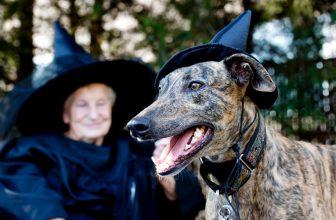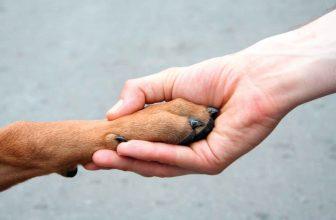Prison dogs
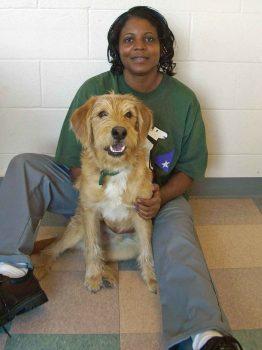
In places not known for kind atmospheres and life-affirming ways, love and compassion bloom.
Death-row dogs across the country are getting a second chance at life from some unusual saviors: prisoners looking to locate their own second chances at a meaningful life. Some incarcerated for a few years, others for the better part of a lifetime, these inmates learn life traits, compassion, communication skills, work ethic, job skills and love as they take unwanted dogs out of shelters and train them to become ideal companions or even service dogs.
While the inmates give dogs training to become the best they can be, the dogs also give the prisoners the chance to experience unconditional love and responsibility, some for the first time in their lives. Also, the atmosphere at the prisons, almost always confrontational, becomes more mellow and less violent with the inclusion of the dogs and the training programs.
The programs, be they for youth offenders or adult convicts, are all geared toward a win-win-win situation: The dogs are saved, the inmates have a purpose and the adopted owners get a well-trained dog. It’s a chance for the inmates to return something positive to the community, despite what they may have done in the past. This prisoner/pup partnership may seem like an unlikely situation, but in the end, it couldn’t be a more perfect pairing — forgotten elements of society helping each other to create a better world.
C.H.A.M.P. to the rescue
Housing Unit Two B-wing at the Women’s Eastern Reception, Diagnostic and Correctional Center in Vandalia, Mo., is affectionately known as “The Dog House.” It’s here that 12 female inmates train dogs rescued from the streets, local rescues or the shelter system, turning them into ideal pets thanks to the Canine Helpers Allow More Possibilities (C.H.A.M.P.) Assistance Dogs Inc. organization and its four-year-old Champ to the Rescue prison-pup program.
“People are more confident,” said Janet Cole, executive director and founder of C.H.A.M.P. “They have a deeper belief system in themselves, and their ability to integrate is vastly improved.”
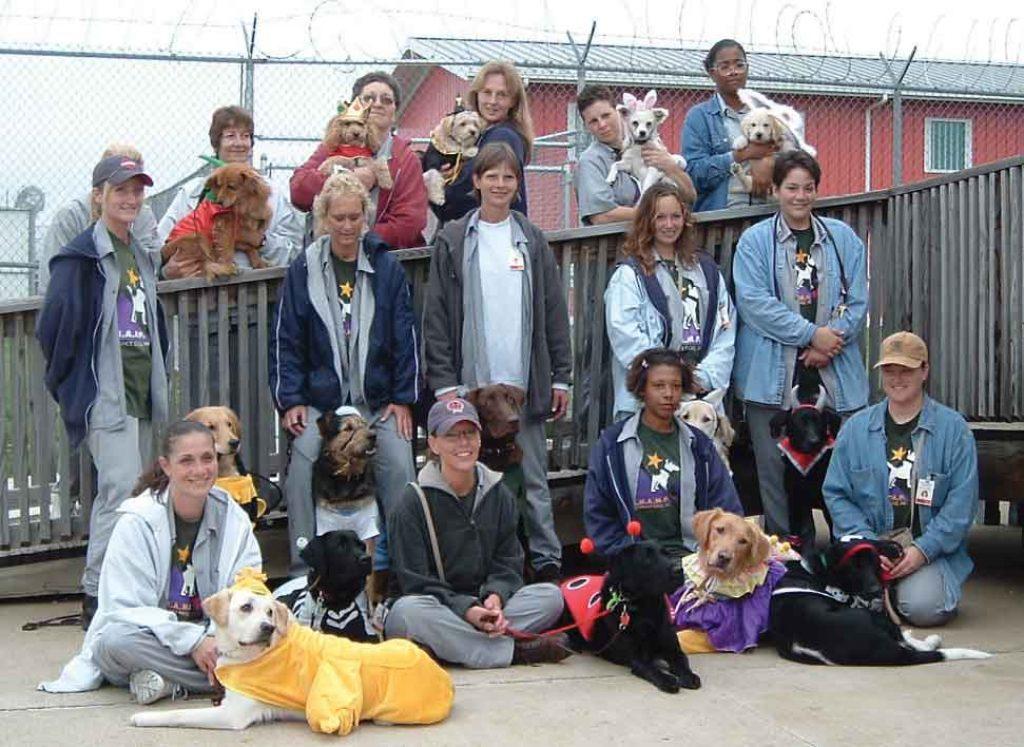
Throughout the years, more than 40 dogs have been trained by the inmates in eight- to 16-week training spans and placed into forever homes, either through word of mouth or direct adoption by prison staff.
These second-chance dogs live with the women, go with them everywhere and learn a slew of basic obedience skills, from “sit” to “no jump.” In addition, said Cole, trainers teach “retrieve” and some tricks, like playing basketball with a toddler-sized hoop.
The dogs vary in size, shape, breed and color. But one thing is constant: the need for the dogs to be ideal pets in the rough. C.H.A.M.P. staff has some tolerance for dogs feeling the sting of life on the streets, but aggressive dogs and those who like to battle other canines are not right for the program, said Cole.
That zero-tolerance policy for fighting applies to the inmate-trainers too. These women go through a rigorous, lengthy process before being hired by C.H.A.M.P. Cole looks for women who are eager to learn and are assertive, yet not confrontational. Ideal candidates must work well with others, be of stable mental status, have no anger management issues, and no prior crimes against children or animals. Interviews with C.H.A.M.P. employees, training class attendance, volunteering and moving to “The Dog House” follow.
Once earned, the job of trainer is coveted. The housing wing, where each trainer kennels the dog in her college dormitory-type room, is the nicest, calmest place to stay at the detention facility, said Cole. But the dogs’ reach extends throughout the prison. Before canines arrived on scene, the prison staff logged approximately 70 conduct violations — from oversleeping to possessing contraband — a month.
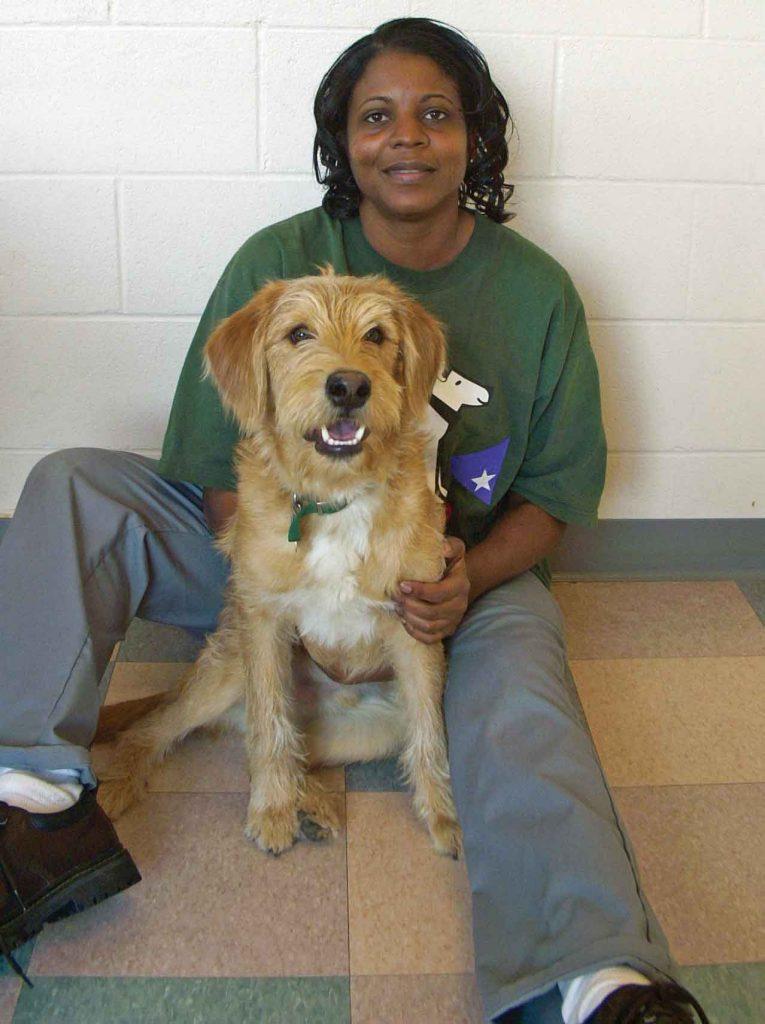
“After the dogs came, the first month, it was down to five or six,” said Cole. “And it’s been less than 10 [a month] ever since. The dogs diffuse [a lot].”
C.H.A.M.P. staff guide women in not just training the dogs, but in acquiring life, parenting and communication skills.
“Dog training is like parenting — it’s positive reinforcement and consistency,” said Cole.
In an environment where “soft” emotions are hidden, the dogs allow these women to feel unconditional love once more. When it comes time to give up their charges, the women do feel sad, said Cole. But almost every time, they choose to dig back in and accept another trainee. Upon release, many inmate-trainers volunteer with C.H.A.M.P. “on the outside,” and some choose various positions in the animal care industry. Cole’s goal is to help make these women stronger, better, more loving women and mothers.
“Those that kept in touch did better on the outside,” said Cole. “The girls believe that. And that’s the point.”
SOS pen pals
In Virginia, the forgotten dogs of society are matched with the forgotten people in a life-affirming partnership of hope and purpose. The Save Our Shelters (SOS) Pen Pals dog training program places death-row canines from area shelters with inmates at lower-security men’s correctional facilities for approximately six weeks. These last-chance dogs are taught various aspect of obedience, even Canine Good Citizen certification, from the inmates who assume loving responsibility for them 24 hours a day. Upon graduation, the dogs are adopted to qualified homes, and the inmates bid a tearful goodbye to their star pupils and best friends.
“They feel like a little more than an inmate,” said Pixie Williams, executive director of SOS Pen Pals, which began in 2001 as a way to curb the state’s out-of-control euthanasia rate.
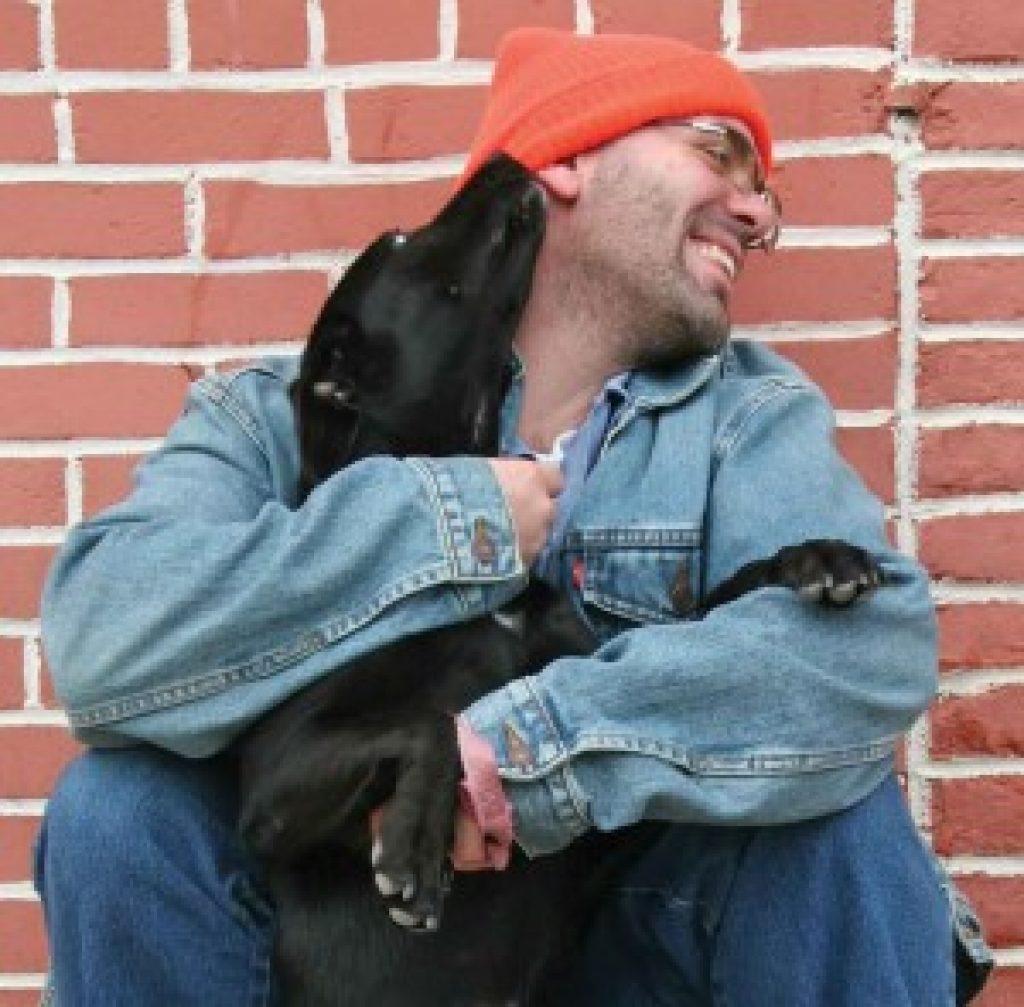
To date, more than 4,000 dogs and cats have been adopted out through the SOS Pen Pals program, which was featured in Animal Planet’s Cell Dogs television program. It boasts a 100 percent adoption success rate. SOS Pen Pals first began at the James River Correctional Center at State Farm, Va., and has grown to include five more local facilities.
As with the other prison pup programs, the SOS Pen Pals dog trainer position is a coveted, hard-to-win job. Applications, interviews, a squeaky-clean record and no history of animal abuse are mandatory.
“They have to be pretty top-notch inmates,” said Williams.
Some of these men serve as team leaders, supervising the other trainers in the program and mentoring the newer ones. Professional trainers from SOS visit the facilities once a week to help the men with the positive reinforcement style of training. Teaching tricks — like praying, rolling over and waving — is also part of the protocol, as is crate, leash and potty training. Various classes and programs are held for the trainers to constantly hone their skills. “The self-esteem [of the inmates] has increased 300 percent,” said Williams, noting how the dogs give the men a sense of purpose.
The dogs also open up communication between inmates and officers. Tensions drop throughout the general population, and the sense of accomplishment helps inmates find career paths after they’re paroled. One former inmate now owns his own training facility, while another is a supervisor with the SPCA, said Williams.
“The morale in prison has turned around,” said Williams. “[The dogs are] making a difference.”
Prison pup partnership
Who would ever think a bundle of tail-wagging joy could bring a burly, tattooed, 250-pound man to tears? That sight happens all the time around the prisoners training service dogs through NEADS.
“There’s a level of humanity present in that facility that wasn’t present before the dogs came,” said John Moon, public relations spokesperson with NEADS.
Based out of Princeton, Mass., NEADS is an accredited service-dog training organization, producing canines that aid the lives of people afflicted with mental or physical disorders, from autism to amputation. Even soldiers suffering from post-traumatic stress disorder (PTSD) benefit from the aid of a service dog. With its Prison PUP Partnership, dogs are delivered to 14 correctional facilities, both state and federal, throughout New England. NEADS-trained inmates then assume responsibility for the in-depth training of the pups, which often takes nearly two years. To date, more than 80 dogs have been raised and placed in service through the Prison PUP Partnership.
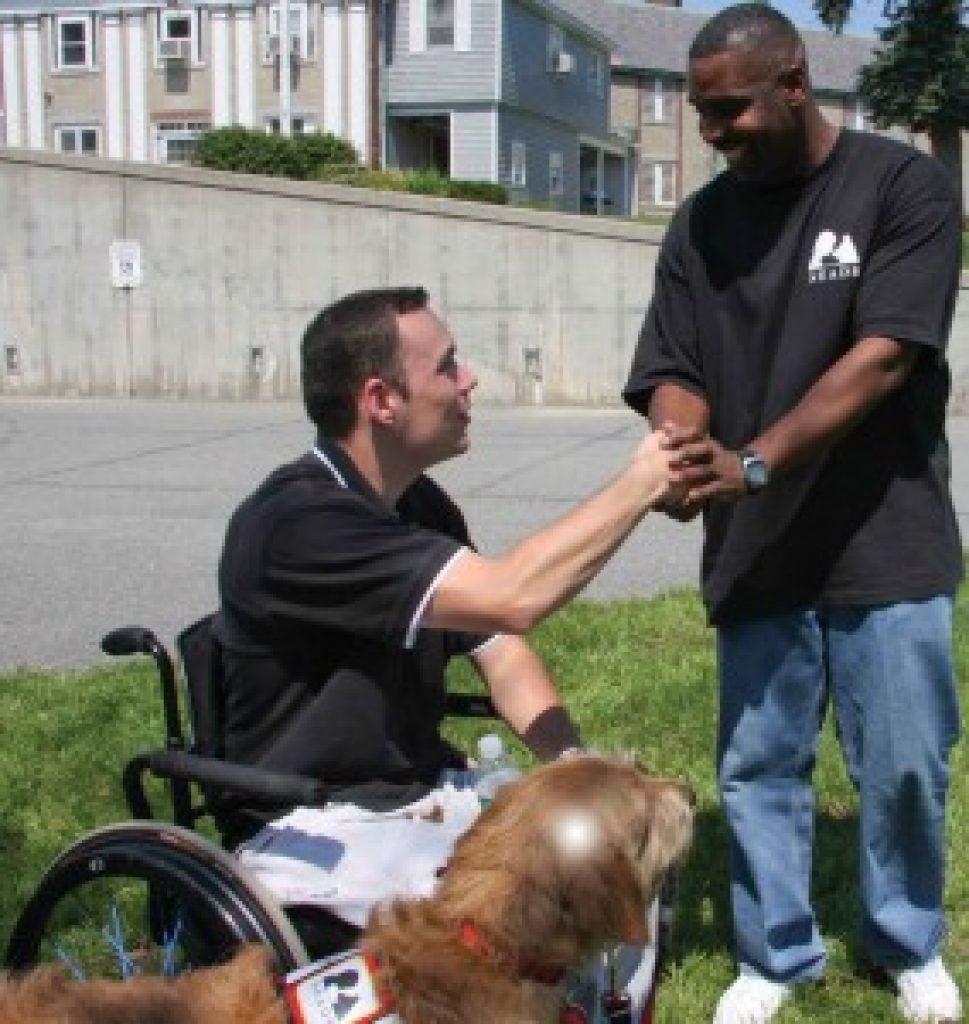
“You will rarely see people sobbing as you do when inmates have to let go of a dog,” said Moon. “It is heart-wrenching. This relationship is, well, a deep one.”
The dogs come from a variety of origins. Canines used as hearing companions are often older, mixed-breed shelter rescues with high energy levels. This makes them ideal candidates to respond to various auditory stimuli in everyday life, said Moon. Many puppies — usually Golden Retrievers and Labrador Retrievers — are donated by the Guiding Eyes for the Blind organization when they don’t fit their group’s criteria and are best suited for other areas of service.
At the age of approximately 16 weeks at the earliest, the dogs are moved to the prisons to begin their 24-7 training. These dogs go everywhere with their inmate-trainers, and their trainers do everything for them, from feeding to grooming. The pairs even live together, but little time except for sleep is actually spent in the cells.
Each correctional facility has its own rigorous way of selecting the inmate-trainers for the program, but all are quite strict, said Moon. When new trainers are hired, veteran ones show these “interns” the ropes for a year, if not longer. In any training situation, there’s always a primary handler/trainer and a backup.
“Both are learning from the NEADS trainer,” said Moon, adding that employees visit the prisons weekly to host training classes and help deal with issues. “The training is multilayered….There’s a constant check-in that takes place.”
On weekends, dogs are released to the “weekend puppy raisers.” The dogs are picked up on Friday night and spend the weekend experiencing sights, sounds and smells of the outside world, from Home Depot to the movie theater. On Sunday afternoon, the dogs come back, ready for their next week of training.
Upon graduation, dogs are matched with their new families and begin a life of love and service. Sometimes, the new owners visit the prison to let the dog and trainer reunite one last time, and say thanks for the good work that was done behind bars. “It’s a deeply touching time,” said Moon. “It helps close the loop.”
Project pooch
For the past 16 years, more than 500 unwanted dogs have been given new lives, thanks to the incarcerated young men at the MacLaren Youth Correctional Facility in Woodburn, Ore.
Project POOCH (Positive Opportunities, Obvious Change with Hounds) is the brainchild of its founder and executive director, Joan Dalton. This 2008 Animal Planet Hero of the Year finalist first began thinking of this program when she served as principal for the correction facility’s high school.
“I was trying to hook them on a way to get back to learning,” she said.
It was then she recalled her days living in New York, studying the human/animal bond. In her research, she discovered that nearly every single person she interviewed responded that dogs taught their owners responsibility and patience. And that was exactly what her incarcerated students needed. Desperately.
Thus Project POOCH was born. Here, up to 15 death-row dogs are housed in the modern, on-campus kennels when they are not being trained, loved, cared for and groomed by their inmate-handlers. Accredited trainers visit the facility weekly to help the inmates with any issues that pop up.
Even if the inmates — ranging in age 18 to 25 and convicted of a variety of crimes like robbery and drug charges — arrived at the detention facility as surly, angry and confrontational youths, they transformed dramatically once Project POOCH took hold of them.
One inmate named Andrew told Dalton that Project POOCH “wasn’t really what I wanted, but it was what I needed.” The youth learn to show respect and compassion for other living creatures.
“Being a part of something greater than yourself has changed me a lot,” said Ian, a 21-year-old inmate-trainer in a 2008 interview. “Before I came here, I was selfish. Now, I’m selfless.”
eing hired at Project POOCH is a coveted privilege, and the staff has no tolerance for rule breaking. Interviews by Dalton and senior inmate-trainers, and days spent at the kennel and serving as a “probie” for an initial trial period all lead up to earning the coveted trainer position. Many stay for years, and some begin mentoring new trainers, utilizing their newfound communication and management skills. Learning job skills that will empower the youth in the outside world is a big perk of this program. Out of 100 Project Pooch trainers, none returned to the correctional facility once released, said Dalton during a televised report for KATU’s AM Northwest in the fall of 2008.
The program’s dogs are mostly mixed breeds, and all come from shelters; no private-party dogs are accepted.
“We’re trying to teach the youth that once you get a dog, it’s a commitment for life,” Dalton said. “We don’t take the easy dogs for the shelters to adopt, either.”
Dalton or another volunteer visit the area shelters, taking video and then letting the inmates help pick which dogs should be included in the program. This serves two purposes: getting the inmates to hone decision-making skills and showing them that picking anything based on looks alone is a bad idea. Even dogs such as Lougar, a three-year-old Akita mix found tied to a tree, starving and with a badly injured leg that required amputation, deserve a second chance because of who they are on the inside.
This gives the young men, most of which also got an unfair lot in life, a sense of camaraderie with the dogs. They use skills, such as patience and positive reinforcement they learned to overcome their own demons with, as tools to help train the dogs in conquering theirs.
“They’re teaching the dog to trust again,” said Dalton. And as a result, the inmates end up healing themselves.
Potential adopters can view the dogs on the Project POOCH website, and then come to the facility to view the dogs in person. An application, home visit and overnight trial run follow if a family wishes to provide a forever home. Even the trainers have a say in where their dogs will end up.
In spite of this control, parting with their companions isn’t easy for these tough guys. They won’t come right out and say it, but all are deeply affected when their dogs leave, said Dalton.
“None are going to admit ‘I went back to my [housing] unit and I cried, I was so upset,’” she said. “All say ‘I really helped that dog and now I have a chance to help another.’”
Pit bulls & parolees
In Los Angeles County, more than 50 percent of the shelters’ populations are comprised of Pit Bulls and other “bully breeds.” Behind bars. In cages. If they are given a second chance and “sprung from the joint,” the public has a hard time seeing past their exterior to who they are inside.
This is something all ex-convicts know about, from the bars to the discrimination. Those released from prison on parole have a similarly rough time trying to incorporate into society. Perhaps it’s this shared experience that bonds parolees and Pit Bulls so closely together at the Villalobos Rescue Center, a sprawling 10-acre Pit Bull rescue facility in Agua Dulce, Calif.
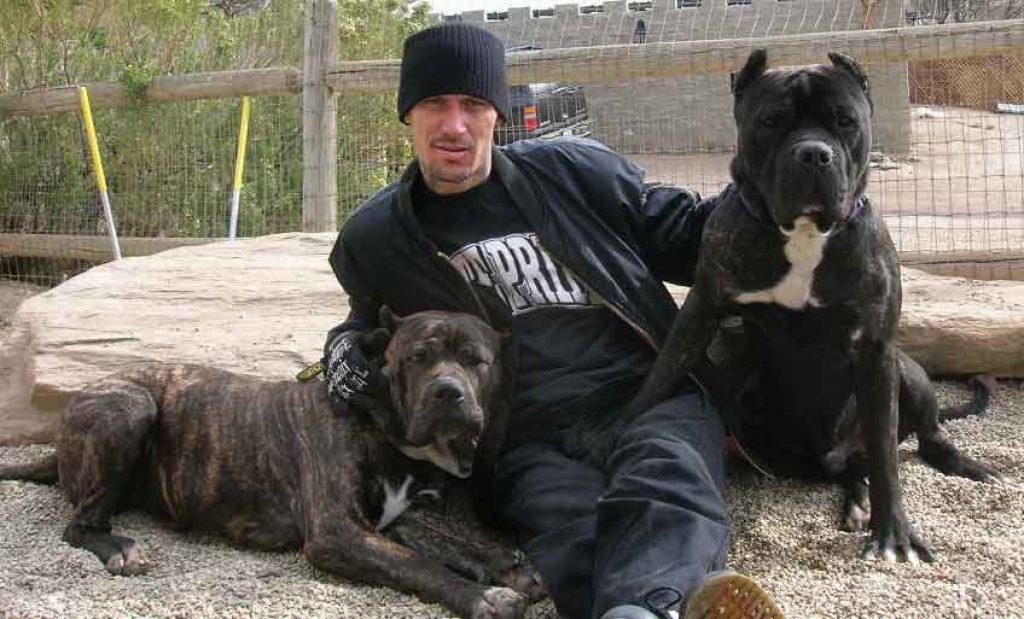
Currently, it houses 200 dogs, many of whom will live out their days in safety here while others find work on movie sets or love in homes of adoptive families. Founded in 1993 by renowned Pit Bull expert, rescuer and trainer, Tia Maria Torres, Villalobos is also the home to the Underdawgz program. Under this program, L.A. County parolees and the Pit Bulls work together for a second chance at life. Here, they clean kennels, train dogs, build structures, help with rescues, work with Torres and her public education programs, and do ranch-hand style work, all while learning social skills and communication techniques. Six men are employed by Torres currently, and 20 have worked with her since the program began five years ago.
“The guys totally, totally, totally relate to the dogs,” she said. “[They say] ‘People look at us the same way they look at the Pit Bulls. They assume we’re bad guys.’ It really hits home with these guys. They made mistakes, but they’re trying to do the good thing. Give them a chance.”
This project began when Torres’ husband, out on parole, experienced a near-impossible return to society. So many doors slammed shut on him, and prejudice blocked his path.
“That just hit me,” Torres said. “These guys have a hard time trying to do the right thing now.”
She wanted to help these “underdogs,” just as she did 16 years ago when she rescued her first Pit Bull from a Lancaster, Calif., shelter. Torres hired a few parolees to work at Villalobos, and the response grew like wildfire. Today, the men range in age from mid-20s to mid-40s, and some stay employed there for years while others later obtain jobs in mainstream America. Part of the draw is the dogs, but so is Torres’ attitude that the past is the past.
“Everybody has a shot,” she said. “No matter what. We truly stand by [the idea that] everybody deserves a chance. [This work] gives them something to care about other than themselves for the first time. It softens up the guys. Now they get to break into society slowly. The dogs ease the tension.”
The success of the program attracted producers at Animal Planet, and this fall, Pit Bulls and Parolees, a reality show about Torres, the parolees and Villalobos Rescue Center, debuts. Torres is thrilled the show will help spread the word about these two forgotten elements of society.
“They see the guys and they see the dogs….it’ll humanize them,” said Torres.
Saving each other
A life locked up is difficult on both humans and canines. But working together, this unlikely pairing of unwanted shelter dogs and forgotten criminals creates something magical. The inmate-trainers give these second-chance canines skills and lessons needed to become cherished pets, and in turn the dogs give the men, youth and women a chance to do something productive with their lives. People may say the inmates are saving the dogs, but many of the inmates say, in fact, that they’re the ones who are being saved.
Photo credits
Photo one and two: Courtesy of Nola Ewers and Theresa Dattilo for C.H.A.M.P. Assistance Dogs Inc.
Photo three: Courtesy of Virginia Broitman for SOS Penpals
Photos four: Courtesy of NEADS Prison Pup Partnership
Photo five: Courtesy of Villalobos Rescue Center




